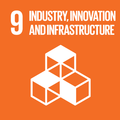The BioBooster from Grundfos treats wastewater on site, allowing for water reuse and helping to preserve local aquatic environments within a given watershed.
The BioBooster has been wound down “following years of deficits and a series of unsuccessful attempts to refocus the business.” You can read more on Grundfos’ website here.
Grundfos BioBooster is a decentralised, compact wastewater treatment plant based on an advanced membrane ultra-filtration process. The filtration process removes bacteria from the wastewater, to produce water which can be reused, for example as crop irrigation. The plant has a modular design, allowing users to scale the size of the plant based on their specific requirements. Grundfos designed this solution primarily for municipalities, hospitals and industrial sites. The BioBooster is especially suitable for industries discharging high levels of organics.
For municipalities, the company advocates dealing with wastewater locally, rather than pumping the waste to a centralised, mega-processing plant. This solution means that treated water can then be re-used within the municipality, to irrigate parks for example. The plant can be monitored remotely, allowing for frequent and efficient monitoring and regulation.
Why you should care
The world’s population is growing and demanding more water. But only 3% of the Earth’s water is fresh, of which only around 1% is available for human consumption. By treating wastewater, it is possible to protect local aquatic environments from untreated sewage and enable water reuse, which helps to conserve fresh water resources.
How the Global Goals are addressed
Clean Water and Sanitation
By recycling wastewater cities are able to protect the local environment from untreated sewage and enable water reuse, which helps to conserve fresh water resource.

Industry, Innovation, and Infrastructure
Industry can process their own wastewater on site, rather than pumping it over long distances to be processed - which can be an energy-intense process.


